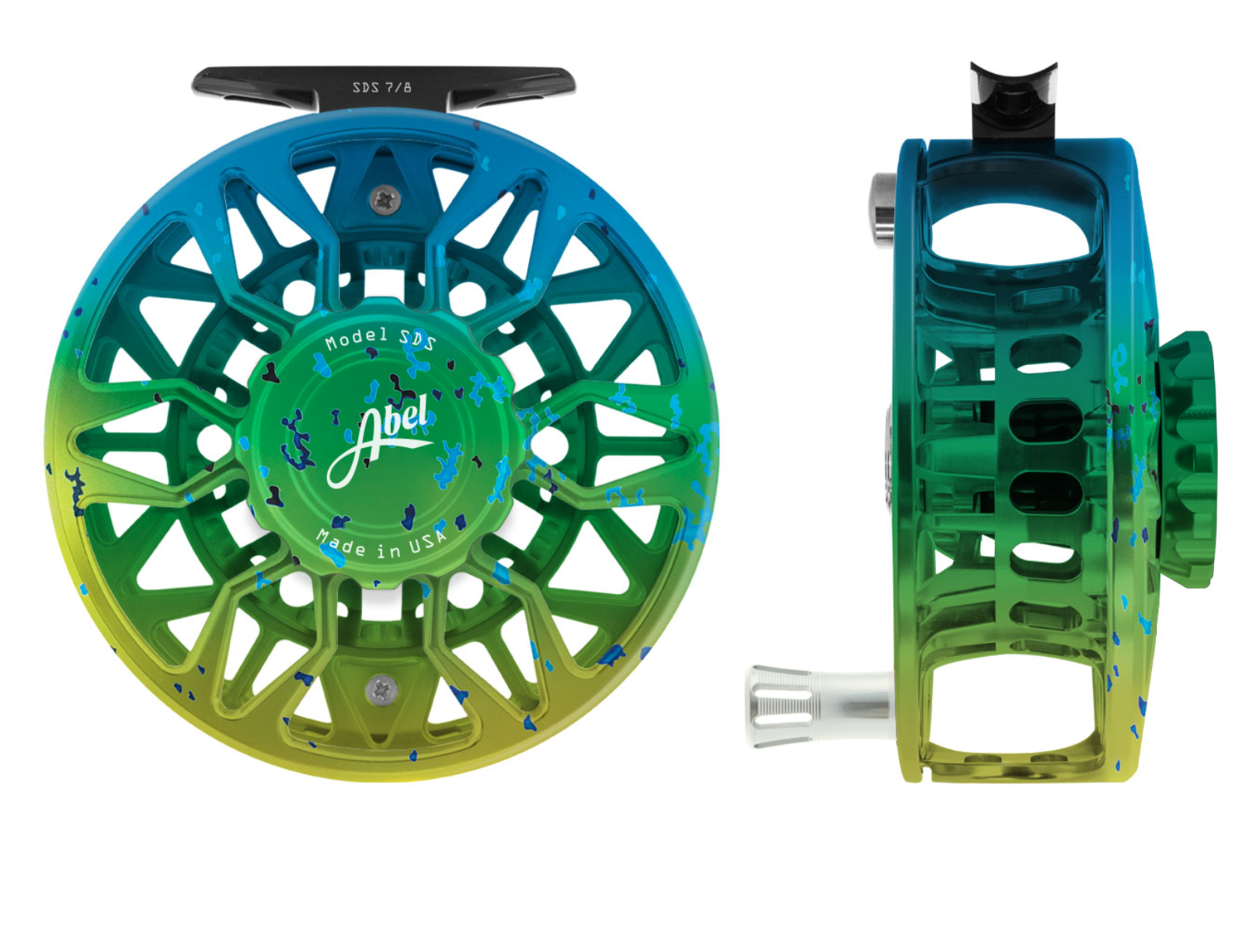Sage SALT R8 Review - Fly Rod Review by Telluride Angler
*Note from Salt Fly Pro: Since these guys jumped the gun and posted their review early to cut off other dealers (and even ahead of Sage) to announce this new saltwater rod, we figured it's only fair to quote it below so our customers get a chance to read about the new SALT R8 and can still buy it from us, the better option for saltwater expertise. Here's our ongoing review (as we clearly state, Nobody has properly tested these new rods enough yet to make an actually useful review and comparison). Keep that in mind when you see all these internet opinions on the SALT R8... We will update our review as we do more thorough testing. Most of the opinions we have seen are based on very limited use (or none in the case of a popular fly fishing forum, where some members have opinions on the new rods that are clearly not based on reality or any actual testing, some of them never having seen a bonefish either).
The article below is all quoted from the Telluride Angler blog. What's hilarious is that these guys tested this in a barn in Colorado in December. Keep in mind we are based in the Florida Keys (home of world record Bonefish, Permit, and Tarpon) and temperature and conditions (not to mention the fish) are an exact match for what you would encounter on a trip to Florida or the Caribbean, etc. We leave it up to you, dear reader, to decide where to get your saltwater fly rods and expertise. Contact us for our thoughts on these rods.
The below review is not our content but our main goal is to help our customers make well-informed decisions on gear by giving them a variety of sources. Call us with any questions: 941-483-6847
Sage Salt R8 Fly Rods | Model-by-Model Review
Posted onSage Salt R8 Fly Rods
Insider’s Line | Model-by-Model Review
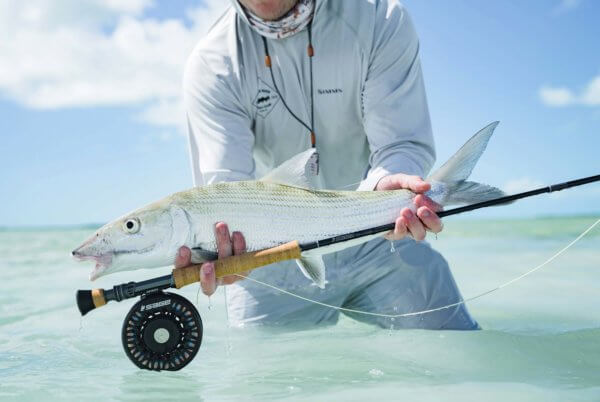
Sage tells a well-scripted story about how technology enables their design team to make a stronger rod with less material, embodying the new series with greater touch and feel without sacrificing strength. We can verify the end, if not the means. Salt R8 are definitely lighter, both in actual weight and swing weight. In fact, they seem shorter than 9’, an impression imparted by light tips and a design that optimizes material placement in the blank.
Over the decades, most Sage rod advancements have been based on a technology story. Only some of these have been great fly rods, however. In retrospect, which successes and failures would Sage (or any other rod maker) attribute to the new material that was touted in the introduction? In fact, there is an intractable industry-wide legacy of designing disappointing fly rods from the newest space age fibers, also noting that many of the unsurpassed legends are made from materials only slightly more advanced than 1950s fiberglass.
If technology helps make these rods great, we would also like to observe that Sage’s rod designers did their very best work on the Salt R8 series. In our appraisal, these are, by far, the best Sage saltwater rods to date.
Sage says Salt R8 are designed as pure flats rods, in contrast with Salt HD, which were designed to span flats fishing and bluewater. Salt HD were unique in the modern saltwater market, heavier, perhaps, but clearly designed for pulling stout fish from deep water. Salt R8 are more nimble to cast, light on the swing, sweet off the tips and wonderfully aligned with the hopes and expectations of the modern flats angler. In the words of Richard Post, “The ability to hold up line on the backcast with supernatural ease is the keystone characteristic of the Salt R8 rods. I felt this with R8 Core models but gravity has a lot more influence on a WF10F than a WF5F. I truly feel like the line behind me stays level and straightened for a longer amount of time when casting these rods.”
Post continues, “Saltwater rods tend to fit into two styles for me. The first, rods that are stiff along their length and cast off the tip with the butt section acting like a wide, solid supporting base. These rods have steep, strong tapers and lighter tips. The caster often feels like they are having to work the rod, but the delivery at distance and into the wind is where this style of rod shines. The second group of rods flex more fully along their length, getting down into the butt section easier and using more of the blank. They tend to have a stiffer tip that stays more in line with the lower end of the rod through the cast to maintain stability and deliver a tight loop. Modern rods of this style use super-fast recovering materials that snap the rod back to neutral from an applied load. They feel encouraging to the caster, generate line speed more easily, and tend to require less effort to generate line speed. The Sage Salt R8 represent the synthesis of these two styles.”
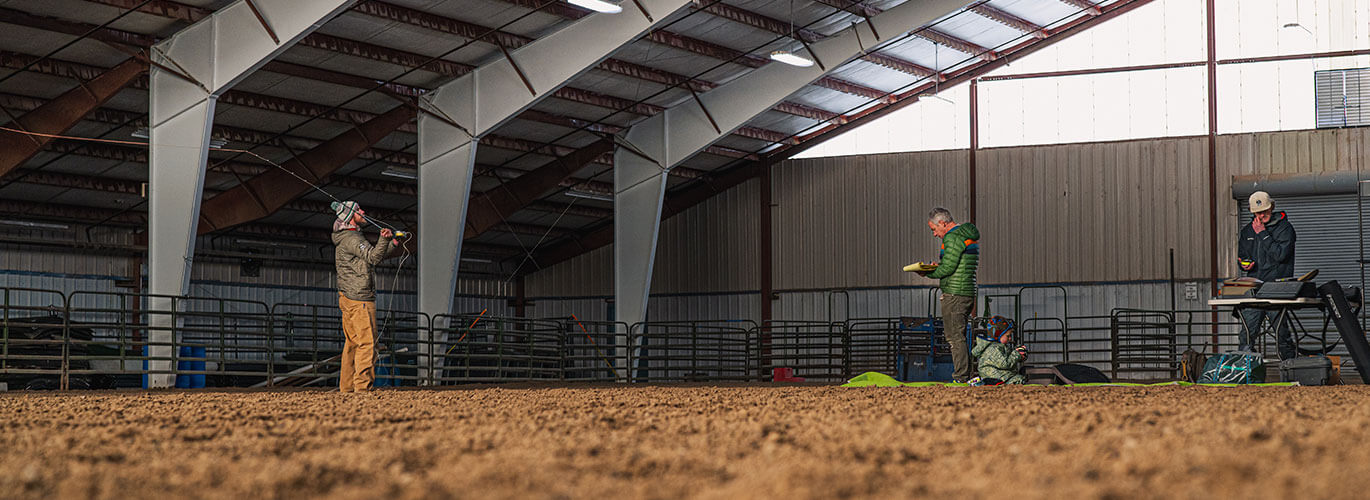
So we did our thing. On a frigid day in late December, Parker, Rich and John met Sage rep Brent Hermanussen at the 4H rodeo barn in Norwood, Colorado and settled in to cast some impressive new fly rods. There are models we haven’t handled (the 12-weights and 15-weight, at this writing), and we need to take these things out on a flat, but we wasted no time in casting through most of the series with multiple fly lines to evaluate them as diligently as possible on dry land. The barn was calm and warm enough to do this properly. The rods spoke for themselves and the excitement among us grew with each model. We’re eager to share our reviews, but even more so to fish these rods in the ocean.

Model-by-Model Reviews
by John Duncan, Richard Post and Parker Thompson
Salt R8 690-4 | Salt R8 790-4 | Salt R8 890-4 | Salt R8 990-4 | Salt R8 1090-4 | Salt R8 1190-4 | Salt R8 1290-4 | Salt R8 1290-4FG | Salt R8 1586-4
Salt R8 690-4 (9’0″ 6-wt, 4pc)
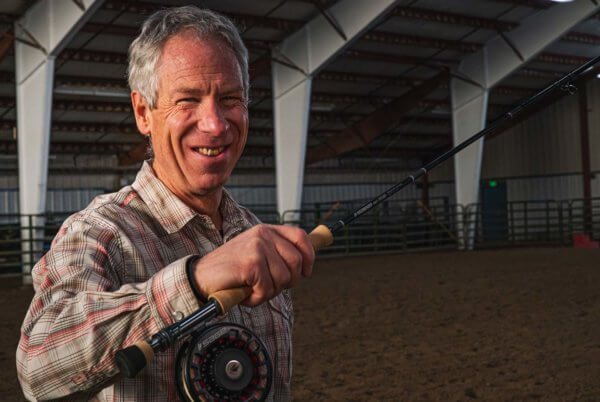
John Duncan: A wonderful light saltwater rod, the Salt R8 690-4 casts with higher line speed than any previous edition from Sage. I’ve heard people ask, “what is a saltwater 6-weight, anyway?” It’s a fair question. To me, the answer is obvious: the lightest fly rod that we can use regularly on the flats. This is the rod that sets the boundary. On the first cast, I knew it was up to the task, yet anything lighter would not. I sense some meaningful design innovation in this model. The stability and line speed are so impressive, yet it loads and shoots with lightness and touch that feel futuristic. Like many others in the series, this model has the classic Sage “tip action,” with a defined flex point high on the blank. Unlike so many predecessors, however, it is not a tricky rod to cast. The timing is natural, not forced. Feel is intuitive, not learned. I loved it immediately with a Rio Elite Bonefish 6-weight but can tell that it will handle almost any line pairing, including specialized streamer lines. This is the first Sage saltwater 6-weight that offers the combination of power, stability and feel that make it widely suitable for flats fishing and a head above in design polish.
Richard Post: The lightest rod in the R8 Salt lineup, the 690 is a precise and purpose-built 6 weight for bonefish. Most rods in this class follow the design ethos, “make a 6 weight that is capable of fishing like an 8 weight.” The R8 Salt 690 feels so light in the hand it is hard to believe it is a saltwater class rod, true dry fly stick lightness and light through the tip. The blank holds itself up proudly and the grip is slightly smaller and thinner, making it feel even more like a true saltwater 6 weight, rather than a downsized member of the rod lineup. Loops are crisp, tight, and immediate. The sensation of the rod loading is progressive from your flats boots to about 75 feet with a Rio Elite Bonefish WF6F. You can certainly unload the whole line, but the sensation at distance makes me feel like more attention was paid to how the rod performs at realistic ranges. The bonefish line puts the bend slightly higher on the blank and really threw a nice V-loop. The Rio Elite Flats Pro engages the blank a bit lower than the bonefish line, giving the sense I could drive a slightly bigger fly. I would opt for the Flats Pro WF6F on this rod for speckled trout, flounder, small snook and just a general ultra-light, ultra-fun inshore rod. The R8 Salt 690 left my casting hand reluctantly and had me daydreaming about silvery clear tails dancing nervously as they interrupt the mirror sheen surface of the light’s last stand against nightfall.
Parker Thompson: The 690/4 R8 Salt is an excellent light duty saltwater rod. It is very light in hand and casts as smooth as any 6wt out there. The rod has plenty of power but is still a remarkable caster. Similar to other models in the R8 Salt family, the 690/4 can handle a wide range of casting strokes. A slow methodical casting stroke will help the caster identify the clear trigger point in the tip section where the rod wants to shoot. If you quicken up your stroke just a bit you will notice tighter and more level loops. This rod is much more intuitive than some other Sage saltwater rods of the past. It would make for a very well-rounded bonefish rod for calmer days fishing small shrimp patterns but would also not be overkill for 6wt freshwater applications like streamer fishing. I cast the Rio Elite Bonefish WF6F on the 690/4 R8 Salt and it was a perfect pairing. With this line the rod holds a wonderfully tight loop at distance and lands nice and soft on the water.
Salt R8 790-4 (9’0″ 7-wt, 4pc)
Richard Post: The R8 Salt 790 is not only one of the best models in the R8 Salt lineup, it is one of the best 7 weights Sage has ever built. Light as can be with just the right amount of inherent stiffness in the blank, the Salt R8 790 embodies a perfectly designed fly rod for flats fishing. Firm with a feeling of strength and a progressive flex that conspires perfectly with the amount of line leaving the rod tip, the feedback to the caster is tremendous. As you rock the rod backwards to begin the cast you feel the tip engage. The 790 R8 Salt carried an Elite Bonefish line in the air with such extraordinary fluidity. The rod never made me feel like it preferred to be cast a certain way, rather encouraging me to lead while following along in perfect step. I could hammer the rod or sit back and feather it. The Rio Elite Bonefish is an ideal match with lightly dressed bonefish flies up to a size #4. The Elite Flats Pro would be my choice for Redfish, more general saltwater use and larger flies. For the flats fisherman that wants a lighter touch without compromise, get your hands on the Sage R8 Salt 790.
Parker Thompson: The 790/4 R8 Salt is one of the most well-rounded 7wt saltwater rods I have ever had the pleasure of casting. This is easily one of my favorite rods in the R8 Salt family. It isn’t as stiff as some other 7wt Saltwater rods but still has plenty of power to drive bonefish flies into the wind. It would be easy to mistake this rod for a freshwater 7 when you first pick it up due to the physical weight, which is ideal for the flats. Once you get some line out you will realize it is very much a saltwater fly rod. It has power but also possesses superior feel and touch which is crucial for a bonefish rod. It is cut from the same cloth as the 6wt and 8wt in the R8 Salt family in terms of physical weight and castability. All three of these rods shoot line well and hold a nice tight loop well into the running line of a long headed fly line like the Rio Elite Bonefish (which is my favorite line on the 790/4). I have also messed around with the Rio Elite Flats Pro on the 790/4 and surprisingly the rod handled the heavier fly line very well. Though it is not the line I would typically reach for with a rod like this it is nice to know that the heavier line doesn’t fold the tip of the rod at all. The Elite Bonefish line quickens up the rod a bit and is a sensational match on the 790/4.
John Duncan: Love at first swing, the Salt R8 790-4 casts hair-thin loops with the combination of accuracy and feel found in my favorite fast action trout rods. It’s like a dry fly rod for bonefish. This rod far exceeds functional. I threw it with both a Rio Elite Bonefish and Flats Pro. The Flats Pro loads and delivers more naturally at short distances and might be a better choice for redfish but I prefer the bonefish taper because that line presents with more touch than the Flats Pro or other overweighted saltwater lines and seems well-suited to the purpose of a light flats rod. Many anglers will fish this rod for trout, bass and other alternative applications. It is stable enough to handle heavy streamers and the full range of specialty streamer fly lines.
I put no saltwater 7-weight above this one.
Salt R8 890-4 (9’0″ 8-wt, 4pc)
Parker Thompson: The 890/4 R8 Salt would have to be my favorite Sage 8wt rod I’ve ever messed around with. It is wonderfully engineered and not nearly as stiff and disconnected as the Salt HD 890/4. This rod is light in hand but not too light to balance a modern saltwater large arbor fly reel. It shoots line very well and is a very easy casting 8wt. When you jump from the 7wt to the 8wt in the R8 Salt family the first thing you will notice is how much more line speed the 8wt generates. It is effortless to pick up a lot of line and send it back to the target. The rod is accurate and delicate in close and then absolutely rockets line from 60’ on. I’ve cast this rod with the Rio Elite Flats Pro WF8F and the Rio Elite Bonefish WF8F and liked both lines a lot. The Flats Pro is a great all around line for the angler chasing several different species and doesn’t slow down the rod as much as I had expected. The Elite Bonefish turns this rod into a high performance machine. With this line the rod throws dagger loops at all distances and feels light and sporty. The 890/4 R8 Salt with the Rio Elite Bonefish WF8F would make for an absolutely lethal bonefish outfit.
Richard Post: I firmly believe this is the best 890 I have ever cast from Sage, and it is among the best Sage fly rods I have cast in any length and line weight. The blank has a light feeling and imperceptible tip weight, providing a sensation of balance and lightness without a reel. There is a suppleness to the tip that feels more elastic than soft, like there are bands along the blank sending signals back to the cork. The feedback circle was completely positive and left me with a feeling of rightness and a sense that I was getting away with something. The R8 Salt 890 performs like a fast, stiff rod without casting like one. You can feel the rod load into the cork, but the tip never gets away from the butt section and you don’t seem to ever have to wait for the line to straighten out behind you. I could cast with a very mellow tempo or frantically load the rod and nothing seemed to throw it out of sync. The blank feels like it possesses the ability to morph its taper to accommodate different applications of power. The Elite Flats Pro was my top pick and this line seemed to showcase everything the R8 Salt 890 possessed in the most electric and playful way. Select the Flats Pro for the best all-around performance as an inshore and flats rod and for redfish and permit specifically. The Elite Bonefish tightens up the blank a touch and gives the rod a business-like feeling. Fish a #8 gotcha or a #1/0 spawning shrimp without compromise. As fine as this rod feels with a floating line, the butt section stability of the blank under load lends itself to being highly capable of yanking sinking lines from surface tension. You can really stand on this blank and hammer it if needed, but the fact that you don’t have to is what truly impresses me. This is the 890 that I’ve been looking for from Sage and all saltwater fly fisherman should take notice.
John Duncan: For the first time in at least a decade, Sage has designed a saltwater 8-weight that I recommend without qualification. I cast this rod over and over with a Rio Elite Bonefish and Flats Pro, the latter of which slows the cadence slightly without sacrificing crispness or fast action character. The Salt R8 showcases the design strategy of the series: saltwater fly rods in the classic “tip casting” mold that have a wider sweet spot and enhanced feel over their predecessors. I notice all of the details with this rod: the grip perfectly sized and contoured, a narrow diameter blank that slices through the wind, the hard chrome guides shooting without the drag of titanium. I like the look, I like the angled stripping guides, I like the shape and feel of the fighting butt.
Above all, I like the way it casts. As the angler increase line length, the upper mid-section tightens in a pleasing and manageable way, assuring that the line stays high on the back cast and jacking line speed just as the caster aerializes the last of the line head, ready to shoot the fly to target. This rod is optimized, refined, natural, ideal.
The Sage Salt R8 is a forerunner for best 8-weight in the world and should be compared head-to-head with the Loomis Asquith and Scott Sector.
Salt R8 990-4 (9’0″ 9-wt, 4pc)
John Duncan: Equally capable but more line sensitive than the others, the Salt R8 990-4 needs a Rio Flats Pro or SA Infinity Salt to load into the mid-section, where it really comes alive. It’s a very good saltwater 9-weight with the right line, but lacks polish with lighter lines, like the Elite Bonefish, or lines with unusual heads, such as the Rio Elite Permit taper. The 990-4 marks the transition between the light and heavy line weights in the series. The 690, 790 and 890 are remarkable for their airy feel and hand-to-tip connection with the line. The 990-4 is like a Howitzer. It will hit all of your downrange targets, but you might need to shield your eyes and ears while casting.
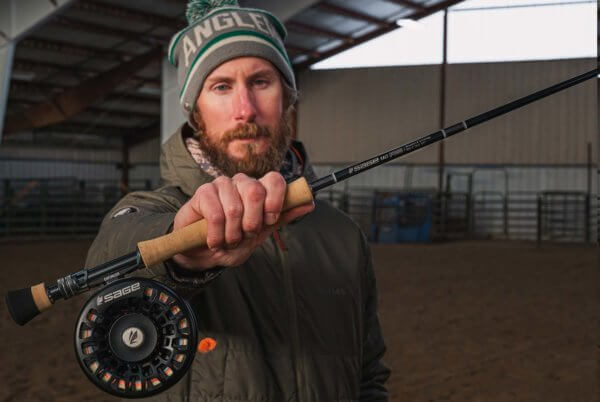
Richard Post: The R8 Salt 990 is a very good 9 weight, but it didn’t have the unicorn feeling of the 790 and 890 to me. I thought this rod had a more traditional Sage feeling and benefited the most from an aggressive casting stroke. When I stepped up the cadence and increased my energy input the rod responded prodigiously. Some rods lean towards presentation; some rods lean towards power. The R8 Salt 990 leans towards power and the more I put into the rod the more the rod gave back. I cast the Rio Bonefish, Elite Flats Pro and Elite Permit WF9F. The Elite Flats Pro was my pick on the rod and broadened the loading range. Both the Bonefish and Permit lines required more precise timing than I care for, and neither achieved the performance of the Flats Pro on the 990. I believe the R8 Salt 990 is a shade stouter than the Salt HD 990 and lends itself to be a better rod for sinking lines and more power-oriented techniques. Long pick up off the water, automatic delivery and the capability to generate tremendous line speeds are the hallmarks of the R8 Salt 990.
Parker Thompson: The 990/4 R8 Salt from Sage is a little different than the other rods in the R8 Salt family. Where the 6wt, 7wt, and 8wt are all very well rounded rods the 9wt seems to be lacking an identity in a lot of ways. It is a relatively nice casting rod but it doesn’t quite have that silky smooth feeling that other rods in the lineup have. It takes a little longer to get used to this rod, too. Most of the rods in the R8 Salt lineup are very intuitive and tell the caster what they want from them. The trigger point on the 990/4 isn’t as automatic as the others but you can still find it with a little experimentation. Finding the correct line on this rod was a bit of a challenge. I played around with the Rio Elite Permit WF9F, Rio Elite Bonefish WF9F and Rio Elite Flats Pro WF9F. All three lines will work for different purposes but I found the Elite Flats Pro to be my favorite. The Elite Bonefish throws a nice tight loop and would be a good line for heavy-duty Hawaii bonefishing but the Elite Flats Pro is the most well rounded line in the bunch.
Salt R8 1090-4 (9’0″ 10-wt, 4pc)
John Duncan: This is one of my three favorite rods in the series and the finest 10-weight Sage has ever produced. 10-weights are tricky because their popular purposes call for conflicting characteristics. A rod with fighting power for tarpon may lack touch and fast-loading characteristics for permit. Designing a lightweight 10-weight is a challenge for every rod maker, too. It’s a tweener line class that requires purposeful design and nuanced balance. Many rod makers design their 10-weights in a chip-off-the-block fashion, sizing up the 9-weight or down the #11. That produces a mediocre rod in the middle of the range.
The Salt R8 loads a little deeper than the lighter line weights, but only in a way that helps me generate line speed. It is springy and lively with a Rio Elite Tarpon WF10 and perhaps the only 10-weight I’ve ever cast that makes the Rio Permit taper feel good. I still don’t like that line, but it’s a tribute to the rod. The butt section feels “Sage strong,” but the tip is lighter and more accessible than the comparable Salt HD. This is advanced rod design, marrying the tip and butt section in a sophisticated taper. The Salt R8 1090-4 has more power for picking up long lines than other 10-weights. Again, this is purpose-driven. Permit and tarpon fishing require lots of 2nd shots, often at distance. There is a hidden stiff section in this rod that lives below the casting quadrant. It only appears when called upon, but will make a big difference in your fishing.
You won’t need to ask whether this is a “permit 10-weight” or “tarpon 10-weight.” It is both, as well as formidable striper and roosterfish rod. Nice job, Sage.
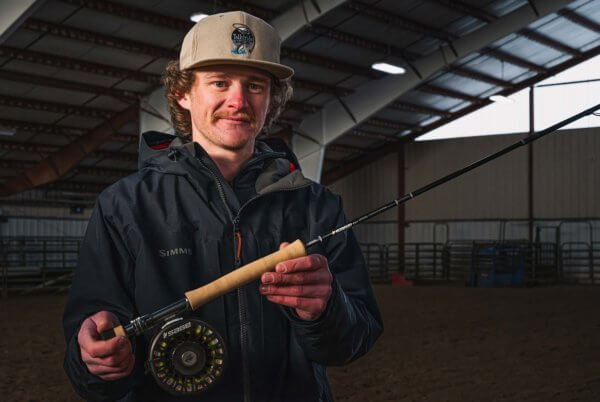
Parker Thompson: This very well might be the finest rod in the whole R8 Salt family of fly rods. It is as well rounded as any 10wt saltwater rod out there and a remarkably smooth caster. The rod itself is light in hand and will balance well with a wide range of fly reels. This rod makes everything a little easier on the caster. It is very good at telling you when to shoot line and when to make another false cast. The rod feels equally accurate in close as it does at distance and loads very easily with only a little line out. I’ve played around with several lines on this rod including the Rio Elite Tarpon WF10F, Rio Elite Permit WF10F, and Rio Elite Flats Pro WF10F. All three lines felt great on this rod which is a big deal for Sage. Some of their other rods have become very picky as to what fly lines they like. It is nice to know that you can pick your fly line based upon the fishing you are doing rather than having to settle for a certain one that pairs well. It should be noted that this rod casts the Rio Elite Permit line better than almost any other rod out there.
Richard Post: The Sage R8 Salt 1090 is the 10 weight I have been looking for. It pulls like a heavier rod and casts like a lighter one. I have not cast a 10 weight that was as powerful and agreeable simultaneously. You feel the rod load and unload without the feeling of trying to overcome something to make it load. I had no hand fatigue from trying to wrestle this 10 weight into my casting plane. Feedback is plentiful and gives you a perfect sense of when the rod is loaded to its potential. Permit anglers take note, the R8 Salt 1090 throws a permit line divinely and hangs lightly in the casting hand. In fact, this rod casts a Rio Elite Permit line better than any rod I’ve ever thrown. The Elite Tarpon line and Flats Pro performed excellently as well and speak to the welcoming nature of this 10 weight. Like the R8 Core 890, the 1090 has that special something that I’ve been looking for in these line weights from Sage saltwater rods.
Salt R8 1190-4 (9’0″ 11-wt, 4pc)
Richard Post: The Sage R8 Salt 1190 is the tarpon rod in the R8 Salt lineup, a fine tool with a no-nonsense demeanor that just wants to fish. There is a big jump from ease of casting from the R8 Salt 1090 to the 1190. The 1190 casts like a big game rod to me and I always get the feeling that I need to actively hold onto such a rod when I’m casting it. My forearms and hand muscles are a little tense so the rod and line don’t get away from me. I cast the Rio Elite Tarpon and Elite Flats Pro, both excellent pairings. The Tarpon taper feels more purposeful and predictable, very quick to the shot but not as lively on the rod as the Elite Flats Pro. Both lines required precise timing for optimum performance and expectations. The rod feels like a tarpon rod and I felt like the angled K guides made it easy to follow your shooting line to stripping position behind them. This is a serious rod for tarpon fisherman and should be a consideration to anyone in the market for a new 11 weight.
Parker Thompson: Just like the 990/4, the 1190/4 R8 Salt is not my favorite rod in the R8 Salt family. It is by no means a poor fishing tool but it does not possess the spark that other rods in the lineup do. The rod itself feels heavier than others in the family but certainly not overly heavy. Where the 10wt R8 Salt holds a nice tight loop the 11wt takes a special stroke to tighten up the loop, especially at distance. This rod feels more like some Sage rods of the past that require a quick casting stroke. With a slower stroke it is difficult to get in sync with the rod. It felt more sluggish than other rods in the lineup and took longer to get used to. I played around with the new Rio Premier Tarpon Clear Tip Floater WF11F line on this rod and it felt a little disconnected. The Rio Elite Flats Pro was far more predictable and will pair better for most anglers.
John Duncan: This is a practical, functional 11-weight with all of the fishing capabilities for its destiny: catching tarpon. It likes a relaxed casting rhythm and pairs best with a Rio Flats Pro rather than a Tarpon taper, the heavy head on which destabilizes the rod. It operates best when aerializing just the line head and shooting the rest. It doesn’t pick up a long line with the same authority as the 10-weight and you can’t force this rod to “tip cast” by stopping it hard on the forward stroke. On the flip side, almost every angler will pick up this rod and cast it well on the first try. It has an intuitive rhythm and above average feel for a big game saltwater rod. I like this rod better than its predecessor, the Salt HD 1190-4, but recommend that the angler cast it side-by side with other modern 11-weights to find the best fit for the angler’s casting style. Like the rest of the series, the Salt R8 1190-4 receives high marks for its componentry.
Salt R8 1290-4 (9’0″ 12-wt, 4pc)
Salt R8 1290-4FG (9’0″ 12-wt, 4pc, with fighting grip)
Salt R8 1586-4 (8’6″ 15-wt, 4pc)
Review coming soon!

